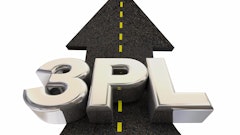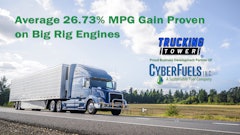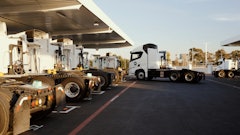
The trucking industry is facing an interesting dilemma as 2018 matures into the second quarter. Many private fleets and for-hire carriers are now looking to replace older trucks with newer, more efficient units. However, several factors are reaching a boiling point forcing longer wait times from Original Equipment Manufacturers (OEMs) to complete orders for new trucks and ultimately move them into service.
Freight volumes are near all-time high levels, particularly as retailers look to restock shelves after a healthy holiday shopping season and online shopping continues its heated pace. According to the Federal Reserve in a report by The Wall Street Journal, industrial production had the largest year-over-year gain since 2010 this past December, meaning there’s more demand to ship goods across the country.
According to ACT Research, sales of Class-8 trucks jumped 59 percent to 296,440 vehicles in 2017. The firm estimated that manufacturers will receive orders for 305,000 Class-8 trucks in 2018, which would be a 19 percent gain. However, transportation intelligence provider, FTR Transportation Intelligence has raised its 2018 production forecast to 330,000 vehicles. Along with the healthy economy, recent changes to the corporate tax rate have incentivized firms further to replace trucks.
This poses an interesting dilemma for private fleets and for-hire carriers, particularly as they prepare their acquisition strategies going forward. Historically, many industry firms made purchase orders of trucks en masse and drove them for anywhere between five and ten years of service, or even longer, as a way to squeeze every penny out of the truck’s usage. However, what firms of all sizes are beginning to realize is that this acquisition strategy is not as cost effective compared to operating trucks at a shorter lifecycle. What’s more, they’re realizing they can achieve more savings on maintenance and repair (M&R) by moving to a shorter lifecycle, the highest variable and volatile cost of a fleet operation.
Truck organizations are now paying closer attention to a truck’s individual “TIPPINGPOINT®,” the point at which it costs more to operate a truck than it does to replace it with a newer model. Factors such as the cost of fuel, utilization, finance costs, and M&R, are all factored into arriving at each truck’s unique TIPPINGPOINT®, giving fleet operations personnel and finance departments a closer look based on data and analytics into determining and even predicting the optimum time to replace an aging truck.
For example, a recent analysis of long-term ownership versus shorter lifecycle management illustrates a significant cost savings over time. A fleet that opted for a four-year lease model on a truck would save approximately $27,893 per truck in comparison to a seven-year ownership model because of the aforementioned factors such as fuel, utilization, financing and M&R. The shorter lease model is also cost-effective when compared to just a four-year ownership model, showing average savings of $12,710.
While the decision on the up-front acquisition method could save millions on an entire fleet, shifting ongoing lifecycle management to a more flexible lease program would help those savings grow further, particularly as fleets grapple with disposal costs of older trucks. Innovative and flexible lease solutions today allow organizations to replace equipment prior to lease expiration without penalty.
This approach offers flexibility to adapt to changing markets, ultimately driving down operational costs while strengthening the corporate image and driver recruitment and retention efforts by continuously upgrading to newer trucks. Companies are leveraging data analytics and comprehensive fleet studies that produce a fleet modernization and utilization plan, projecting when aging equipment will need to be replaced. This is especially effective with today’s fluctuating demand and the current booming economy as companies trying to acquire equipment solely based on demand are faced with equipment shortages and long lead times.
Just as important, recent changes to the corporate tax rate, as well as new accounting standards, have made it more attractive to lease equipment. With these changes, at least in the case of truck acquisition, purchase of equipment remains more costly compared with shorter-term leasing of the equipment. What’s more, leasing remains the preferred method for companies regardless if they have a stronger or weaker balance sheet.
In addition, leasing also allows companies to avoid the risk of residual value and the expense of remarketing. Very few companies with private fleets for example have any infrastructure whatsoever to deal with the distribution or sale of used truck equipment. In our industry, when you operate trucks to their functional obsolescence and all they’re worth after 8 or 10 years is salvage value, then disposal is fairly easy. If you want to take advantage of newer technology, improve efficiency, capture lower costs and improve your financial metrics, then it’s better to have someone else take on the residual risk and the responsibility of disposing of the equipment.
All of these decisions play a critical role in why today’s truck shortage is a growing issue. The legacy mindset of ordering trucks sporadically produces a bottleneck at the manufacture level, delaying the overall the fulfillment process. However, as fleets and carriers more closely analyze data analytics that pinpoint the optimum time for replacement of each individual truck, orders can be predicted over time and delivery of trucks can take on a more efficient process.




























